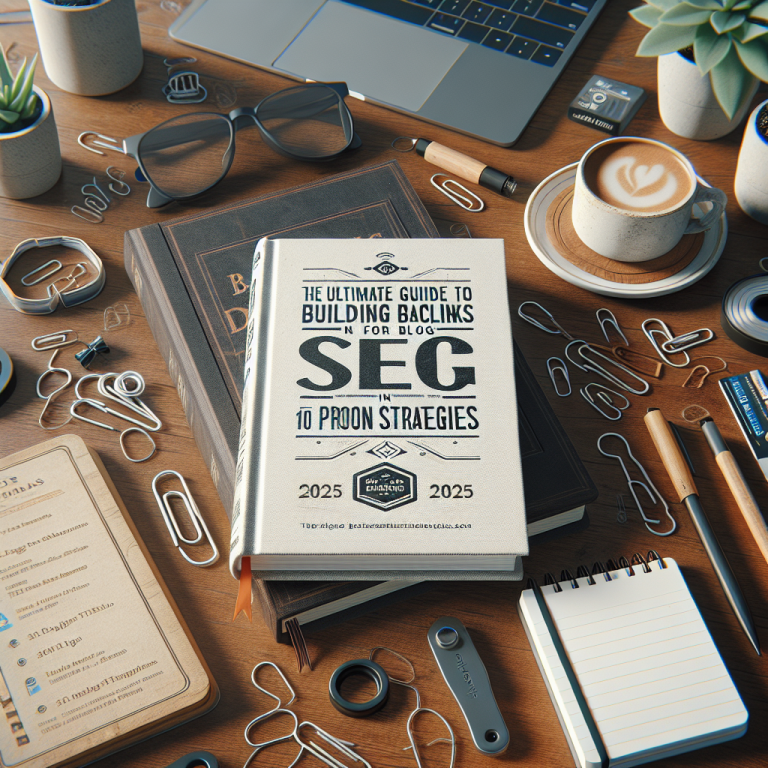How to Optimize Blog Posts for Mobile: 7 Effective Strategies for 2025
- 1. Prioritize Responsive Design
- 2. Optimize Loading Speed
- 3. Use Mobile-Friendly Content Layouts
- 4. Enhance User Experience with Touch-Friendly Elements
- 5. Simplify Navigation for Mobile Users
- 6. Incorporate Mobile-Optimized Images
- 7. Focus on Mobile SEO Best Practices
1. Prioritize Responsive Design
Understanding Responsive Web Design
In 2025, responsive design remains the cornerstone of how to optimize blog posts for mobile. It ensures your website adjusts seamlessly across all device sizes, providing a consistent experience. Responsive design utilizes flexible grids, images, and CSS media queries to adapt content dynamically. This approach not only improves aesthetics but also impacts your SEO rankings, as search engines favor mobile-friendly sites.
For example, major blogs like TechCrunch and Huffington Post have shifted entirely to responsive layouts, resulting in increased engagement metrics. As users access content on smartphones and tablets more than desktops, prioritizing responsive design helps meet user expectations and reduces bounce rates. Make sure your theme or site template is built with responsiveness in mind.
Implementing a responsive design also simplifies maintenance. Instead of creating separate mobile and desktop versions, a single responsive site handles both, saving time and resources. This strategy aligns with Googleâs 2025 algorithms, which emphasize user experience and mobile-first indexing, making it an essential part of your strategy on how to optimize blog posts for mobile.
Practical Tips for Implementing Responsive Design
Start by choosing a modern, responsive theme that automatically adapts to different devices. Test your blog across multiple smartphones and tablets to identify layout issues. Tools like BrowserStack or Googleâs Mobile-Friendly Test can help you diagnose and improve responsiveness. Additionally, regularly update your themes and plugins to leverage the latest responsiveness features.
Donât forget accessibility. Use scalable fonts, sufficient touch targets, and clear call-to-actions. For instance, buttons should be at least 48 pixels high to ensure easy tapping. By prioritizing responsive design, you lay a solid foundation for your mobile optimization efforts, making subsequent strategies more effective.
2. Optimize Loading Speed
Why Loading Speed Matters in 2025
Speed is integral when learning how to optimize blog posts for mobile. Data shows that a one-second delay in page load time can reduce conversions by 7% and increase bounce rates. In 2025, with faster networks like 5G becoming more widespread, users expect content to load instantly. If your site is slow, visitors will leave before reading your blog, negatively impacting your SEO and engagement.
Googleâs latest algorithm updates prioritize fast-loading sites in mobile search results. Thatâs why optimizing your blogâs loading speed is essential for staying competitive. To achieve this, identify and eliminate unnecessary scripts, leverage browser caching, and use Content Delivery Networks (CDNs) to serve content closer to your users.
For example, compress large images, minify CSS and JavaScript files, and consider lazy-loading images and videos. These practices significantly improve your siteâs speed, making your content more accessible and enjoyable on mobile devices. Remember, in 2025, speed is no longer optionalâit’s a key part of how to optimize blog posts for mobile effectively.
Tools and Techniques for Speed Optimization
Use tools like Google PageSpeed Insights or GTmetrix to analyze your siteâs speed and get actionable recommendations. Implement AMP (Accelerated Mobile Pages) where appropriate, to ensure fast rendering of your most important content. Additionally, hosting your blog on a reliable, high-performance server reduces load times.
Regularly monitor your siteâs performance metrics and keep your platform updated with the latest technologies. Fast-loading blog posts not only improve user experience but also boost your search engine rankings, making your content more discoverable in 2025âs competitive landscape.
3. Use Mobile-Friendly Content Layouts
Designing Content for Small Screens
Content layout plays a pivotal role in how to optimize blog posts for mobile. Using a single-column layout simplifies reading and makes it easier for users to scroll through your content. Avoid multi-column designs which can be difficult to view on small screens. Instead, focus on readability, clear headings, and ample spacing.
Mobile-friendly layouts should prioritize scrollability and accessibility. Break up large chunks of text with headings, bullet points, and visuals. For instance, a blog post on digital marketing strategies benefits from short paragraphs and visual aids that illustrate key points, making it more digestible on mobile devices.
Most modern WordPress themes and page builders offer mobile-optimized templates. These layouts automatically adapt to different devices, ensuring your content remains appealing and easy to navigate. Implementing a mobile-centric content layout is crucial in the contemporary content marketing landscape of 2025.
Best Practices for Content Layouts
Use large, legible fontsâat least 16px for body textâand high-contrast colors for readability. Incorporate plenty of whitespace to prevent clutter. Also, consider touch interactions; buttons and links should be easy to tap without zooming or accidental clicks. Testing your content on various devices helps to identify layout issues early.
Lastly, consider the emotional impact of your layout. Clear, attractive, and user-friendly designs encourage visitors to stay longer and engage more. With these practices, your blog content will effectively meet user expectations on mobile in 2025.
4. Enhance User Experience with Touch-Friendly Elements
Designing for Touch Interactions
Touch-friendly elements are vital when learning how to optimize blog posts for mobile. Small or closely spaced buttons and links can frustrate users and lead to accidental clicks. Ensure all interactive elements are large enoughâideally 48×48 pixelsâand have sufficient spacing. This makes your blog more accessible and user-friendly.
According to research, users expect to interact naturally with their mobile devices, and failure to accommodate touch gestures can hinder engagement. Incorporate easily tappable call-to-action buttons, especially for subscribing, sharing, or commenting. Clear visual cues and feedback also improve the overall user experience.
For example, a well-designed mobile blog will include large social sharing icons, easy-to-navigate menus, and touch-writable forms. These seemingly small adjustments significantly impact how visitors perceive and interact with your content in 2025.
Practical Touch Optimization Tips
- Use ample spacing around interactive elements.
- Implement hover states for touch feedback.
- Keep forms minimal and easy to fill out on mobile.
Additionally, leverage mobile-specific features like voice search and gestures where appropriate, making your blog more engaging and accessible. Staying mindful of touch interactions ensures you deliver a seamless experience that keeps readers engaged.
5. Simplify Navigation for Mobile Users
Designing Intuitive Mobile Menus
Navigation is a key component of how to optimize blog posts for mobile. Simplified, intuitive menus help visitors find content easily without overwhelming them. Hamburger menus or collapsible menus are popular solutions, conserving screen space while providing access to all sections of your blog.
Consider organizing your menu items hierarchically, prioritizing the most important pages. Use icons alongside text labels to enhance clarity. For instance, a blog about wellness could feature categories like Nutrition, Fitness, and Mindfulness, all accessible via a clean, easy-to-reach menu.
In 2025, users expect to find what they need quickly. Streamlining navigation reduces frustration and increases the likelihood of longer visits and higher engagement rates, which also benefits your SEO efforts.
Best Practices for Mobile Navigation
- Limit the number of menu items to avoid clutter.
- Use sticky or fixed navigation bars for easy access.
- Incorporate search functionality prominently for quick content discovery.
Testing navigation on various devices helps identify usability issues. Remember, the goal is to make browsing your blog effortlessâan essential part of how to optimize blog posts for mobile in 2025.
6. Incorporate Mobile-Optimized Images
Image Best Practices for Mobile
Images are a crucial part of engaging blog content, but large images can slow down your site if not optimized properly. Use responsive images that adjust to different screen sizes, and compress images without losing quality. This ensures fast loading times and a better user experience.
In 2025, formats like WebP are widely supported and offer high quality at smaller sizes. Lazy loading images also improves performance by loading images only when they enter the viewport. Devices with small screens benefit greatly from optimized visuals that load quickly and look sharp.
Remember to include descriptive alt text with keyword phrases like “mobile-optimized blog images” to improve SEO and accessibility. Well-optimized images help illustrate your content while keeping your site fast and user-friendly on mobile devices.
Tools for Image Optimization
Use tools like TinyPNG, ImageOptim, or Adobe Photoshopâs export options to reduce file sizes effectively. Automate image optimization through plugins if youâre on platforms like WordPress. Also, always test your images on different devices to ensure fast load times and visual clarity.
7. Focus on Mobile SEO Best Practices
Essential SEO Strategies for Mobile
Finally, understanding how to optimize blog posts for mobile also involves embracing mobile SEO. This includes using structured data, optimizing meta tags, and ensuring your content is easily indexable by search engines. In 2025, Googleâs mobile-first indexing means your mobile experience directly impacts your rankings.
Prioritize keyword placement, ensure fast load times, and use descriptive alt textâespecially with variations like “how to optimize blog posts for mobile.” Use schema markup to enhance your snippets in search results and improve click-through rates. Mobile SEO doesn’t stop at technical; content quality, relevance, and user engagement are critical in 2025âs ecosystem.
Regularly analyze your mobile SEO performance with tools like Google Search Console and adapt your strategies based on data. Learning how to optimize blog posts for mobile is an ongoing process that can significantly boost your visibility and organic traffic.
Technical Tips for Mobile SEO
- Ensure your site passes Googleâs mobile-friendly test.
- Use concise, keyword-rich meta descriptions.
- Build fast, mobile-optimized landing pages for key posts.
By adhering to these principles, your blog will be better positioned to rank higher and deliver a satisfying mobile experience. Remember, in 2025, mobile SEO is not optional but fundamental to content success.
Conclusion
Mastering how to optimize blog posts for mobile in 2025 is essential for ensuring your content reaches and engages your audience effectively. From responsive design to fast loading speeds, each of these seven strategies contributes to a seamless mobile experience that boosts your SEO, increases engagement, and drives growth. Stay proactive and continually refine your mobile optimization tactics to stay ahead of the competition. In todayâs digital landscape, your ability to optimize for mobile could be the difference between success and obscurityâso donât overlook this critical aspect of content marketing.
FAQs
1. Why is it important to learn how to optimize blog posts for mobile?
With more users accessing content via smartphones and tablets, optimizing your blog posts for mobile ensures better user engagement, higher search engine rankings, and a competitive edge in 2025.
2. How can responsive design improve my blog’s mobile performance?
Responsive design automatically adjusts your website layout to fit any screen size, providing a smooth reading experience, reducing bounce rates, and boosting SEO performance.
3. What are some effective tools for optimizing images for mobile?
Tools like TinyPNG, ImageOptim, and Adobe Photoshop help compress images without sacrificing quality, making your blog faster and more visually appealing on mobile devices.
4. How to improve the loading speed of my mobile blog?
Optimize images, leverage caching, use a CDN, minimize scripts, and regularly monitor performance with tools like Google PageSpeed Insights to ensure fast load times.
5. How does mobile SEO differ from desktop SEO?
Mobile SEO prioritizes fast load speeds, responsive design, touch-friendly elements, and local SEO tactics, focusing on delivering a great experience specifically tailored for mobile users in 2025.









